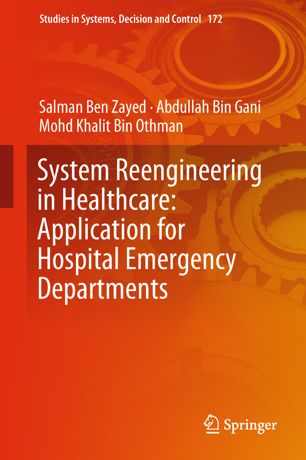

Most ebook files are in PDF format, so you can easily read them using various software such as Foxit Reader or directly on the Google Chrome browser.
Some ebook files are released by publishers in other formats such as .awz, .mobi, .epub, .fb2, etc. You may need to install specific software to read these formats on mobile/PC, such as Calibre.
Please read the tutorial at this link. https://ebooknice.com/page/post?id=faq
We offer FREE conversion to the popular formats you request; however, this may take some time. Therefore, right after payment, please email us, and we will try to provide the service as quickly as possible.
For some exceptional file formats or broken links (if any), please refrain from opening any disputes. Instead, email us first, and we will try to assist within a maximum of 6 hours.
EbookNice Team

Status:
Available4.3
26 reviewsThis book presents an advanced systematic mapping review (SMR) and state-of-the-art taxonomy of emergency departments (EDs). Focusing on the patients’ level of fulfilment and how it can be enhanced, it examines existing problems like waiting periods and overcrowding and how these can be alleviated to provide a better service. The author examined research papers from 1964 to 2018, and developed six research questions, organising them using mapping studies, the primary objectives of which were firstly, to obtain a common understanding of the problems that need to be highlighted in EDs, and secondly, to re-analyse the methods used.
Focusing on quality, the book encourages citations of experimental methods from important studies concerning EDs that can improve services. Through different research papers, various thematic areas in the healthcare sector were examined, like the determination of the relative efficiency of pre-discharge interventions; the analysis of care and managing common indications during the last stages of life; using e-Health to enhance effectiveness and proficiency; the seriousness of patient differences among EDs; the identification of quality problems in healthcare contexts; existing opportunities and the suggested plans.The book concludes that an analytical decision-making process should be used to assess a health technology on the basis of its performance. It stresses the importance of updating this analytical system frequently.